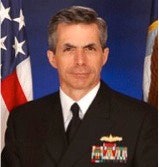
We’ve come a long way since that time, and leadership at the Department of Defense (DoD) asserts that recruiting the widest possible pool of talent is not only the right thing to do, it is also a national security issue. As stated in the Department’s recent Diversity and Inclusion Strategic Plan 2012-2017, “It is critical that DoD strive to have a Total Force that not only possesses the diverse backgrounds and experiences to meet the complex challenges of the future global security environment, but that also reflects the face of the nation.”
This makes sense because the dedicated men and women who serve our country in the armed forces are the backbone of our national security—even more so than its ships, aircraft, tanks and weaponry. The United States military maintains rigorous eligibility standards because it needs competent, healthy and educated young men and women to fill the ranks of the most professional, respected and technologically-advanced military in the world.
Unfortunately, many young Americans who want to join cannot. Startling statistics from the Department of Defense show that 75 percent of young people ages 17 to 24 are currently unable to join. The most common barriers for potential recruits are inadequate education, obesity and/or a criminal record.
The DoD’s 2009 Military Leadership Diversity Commission found that up to 80 percent of age-eligible minorities do not meet the qualifications for the Marines. The barriers for young people to qualify for service include disparities in opportunity driven by historical segregation and inequities in access to quality education, early childhood programs, affordable quality food, and health care.
These disparities cut close to home for me. The Mississippi of my youth was segregated and openly harbored bigotry. In 1962, my distant cousin, Governor Ross Barnett, stood in the doorway of Ole Miss to deny enrollment to James Meredith, an African-American. When the federal government enforced Meredith’s right to equality, riots ensued that left two people dead and scores of persons injured.
Likewise, the case of Brown v. Board of Education of Topeka was decided the year I was born, in 1954, but was not really enforced in Mississippi until I was a sophomore in high school. Public school integration was more peaceful, but it was no less momentous. I benefited because, by going to school with white and black students, I learned to be suspicious of discrimination toward any human being.
The U.S. military has led the way over the last sixty-five years to increase opportunity for millions of Americans through its leadership in recruiting a diverse and effective force. For our nation to dramatically increase the number of young people who can qualify for military service, it will require not only continued efforts to make improvements by all service branches but also partnerships with and leadership from other sectors of American society.
In order to embrace true change and continue on a positive path for inclusion, we must:
1) Take steps to eliminate both conscious and unconscious racism from the armed forces and promote diversity as described in the DoD’s Diversity and Inclusion Strategic Plan and in the Military Leadership Diversity Commission’s full recommendations.
2) Support evidence-based public investments in vulnerable children such as high-quality early childhood education and obesity prevention measures.
3) As individuals, promote the difficult but essential discussions about race that can increase our understanding of unconscious bias, advance racial healing and “put racism in front of us, so we can put racism behind us.”
For those who meet the military’s minimum qualifications, joining the armed forces is a valuable option that builds leaders of character. Being well-educated, fit, and law-abiding are also qualifications that will result in the ability to compete in the private sector. No matter which path a young person chooses, a high level of personal and professional readiness in all likelihood will result in positive contributions to our society.
When all Americans succeed, our nation is stronger. If we have an honest dialogue and work together to tackle the challenges ahead, we will help young people succeed and strengthen our national security.
This article first appeared in STARS and STRIPES. Retired Rear Adm. Jamie Barnett served for 32 years in the U.S. Navy and is a member of Mission: Readiness, a nonpartisan national security organization of senior retired military leaders calling for smart investments in America’s children. America’s Wire is an independent, nonprofit news service run by the Maynard Institute for Journalism Education.



















